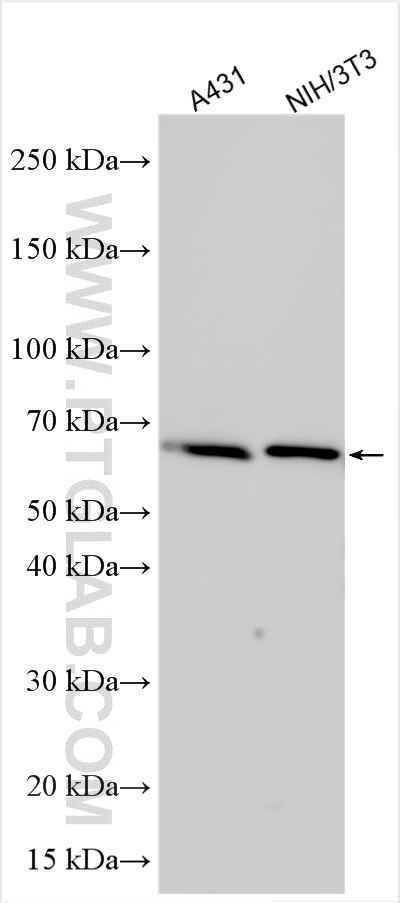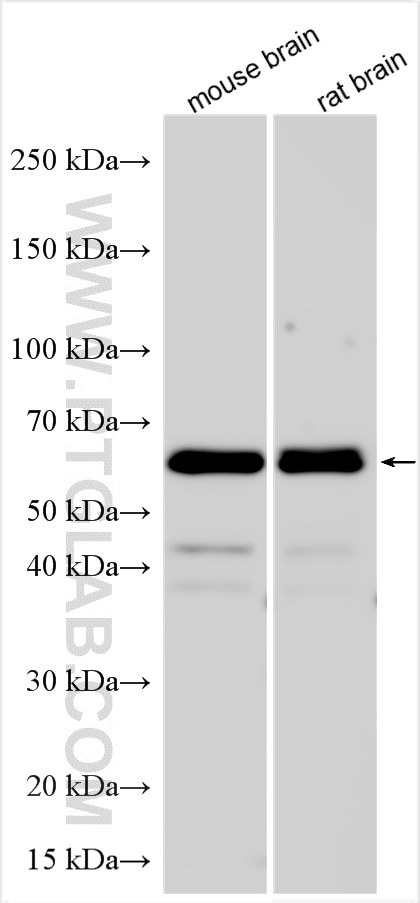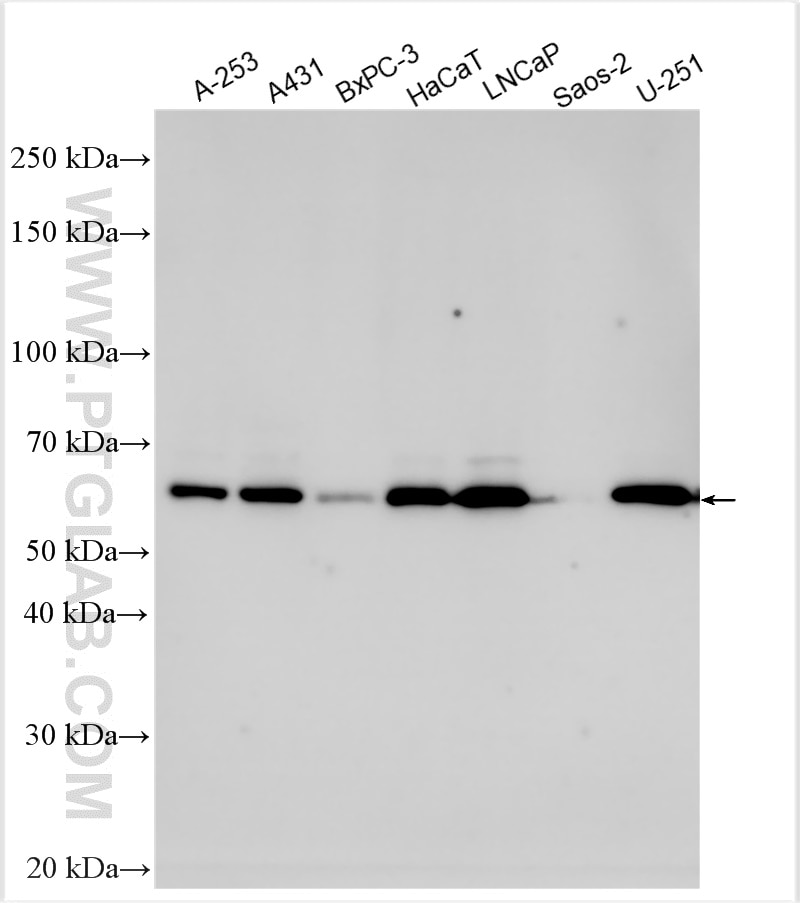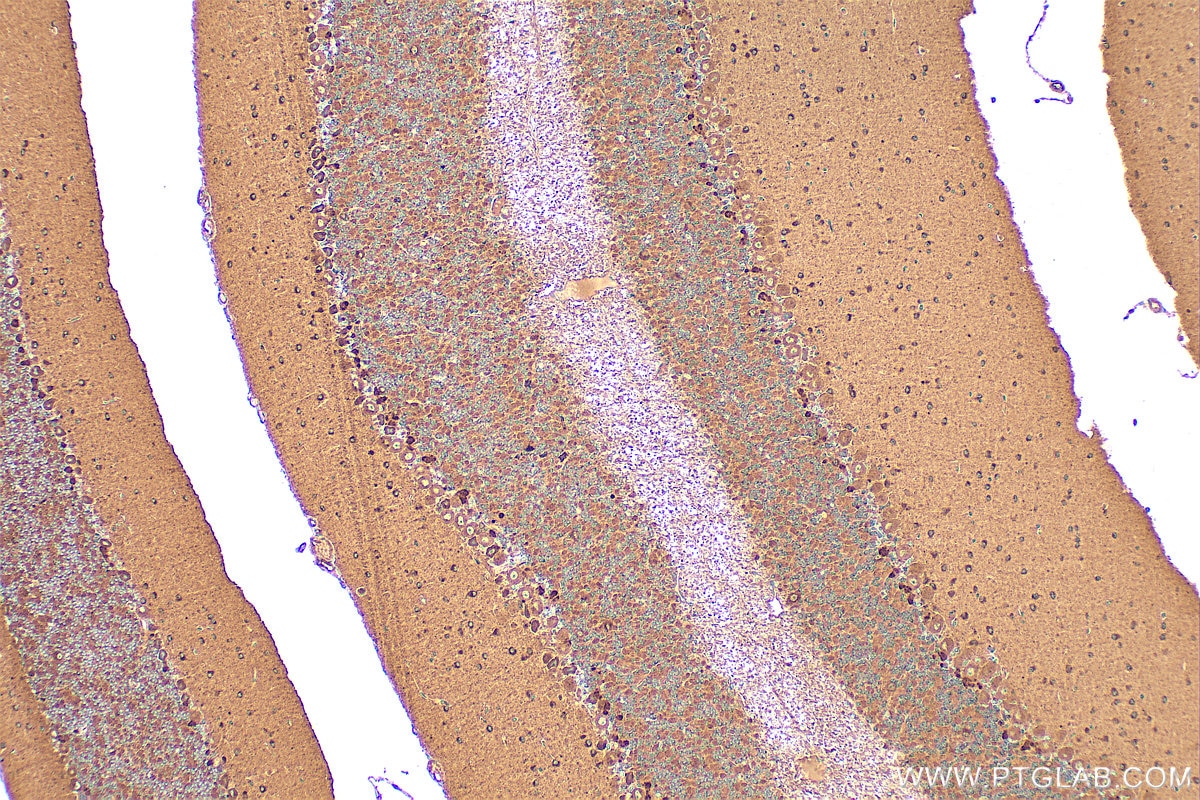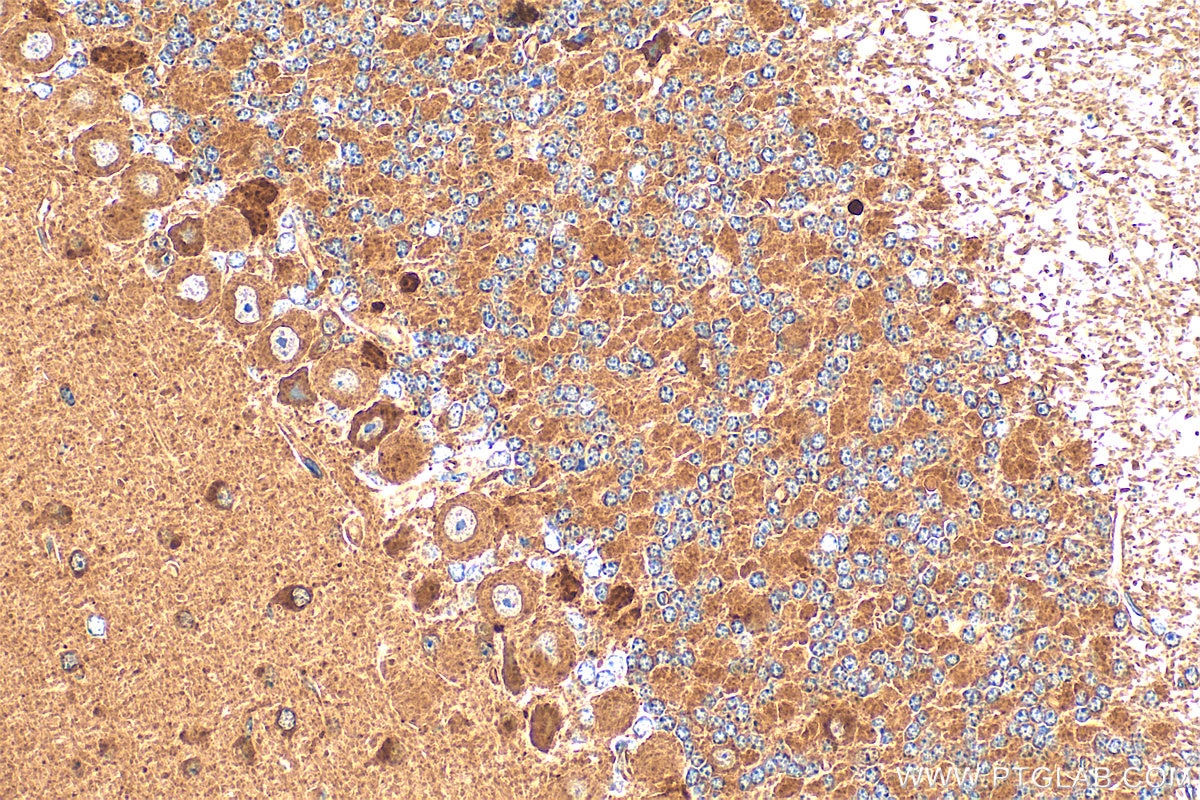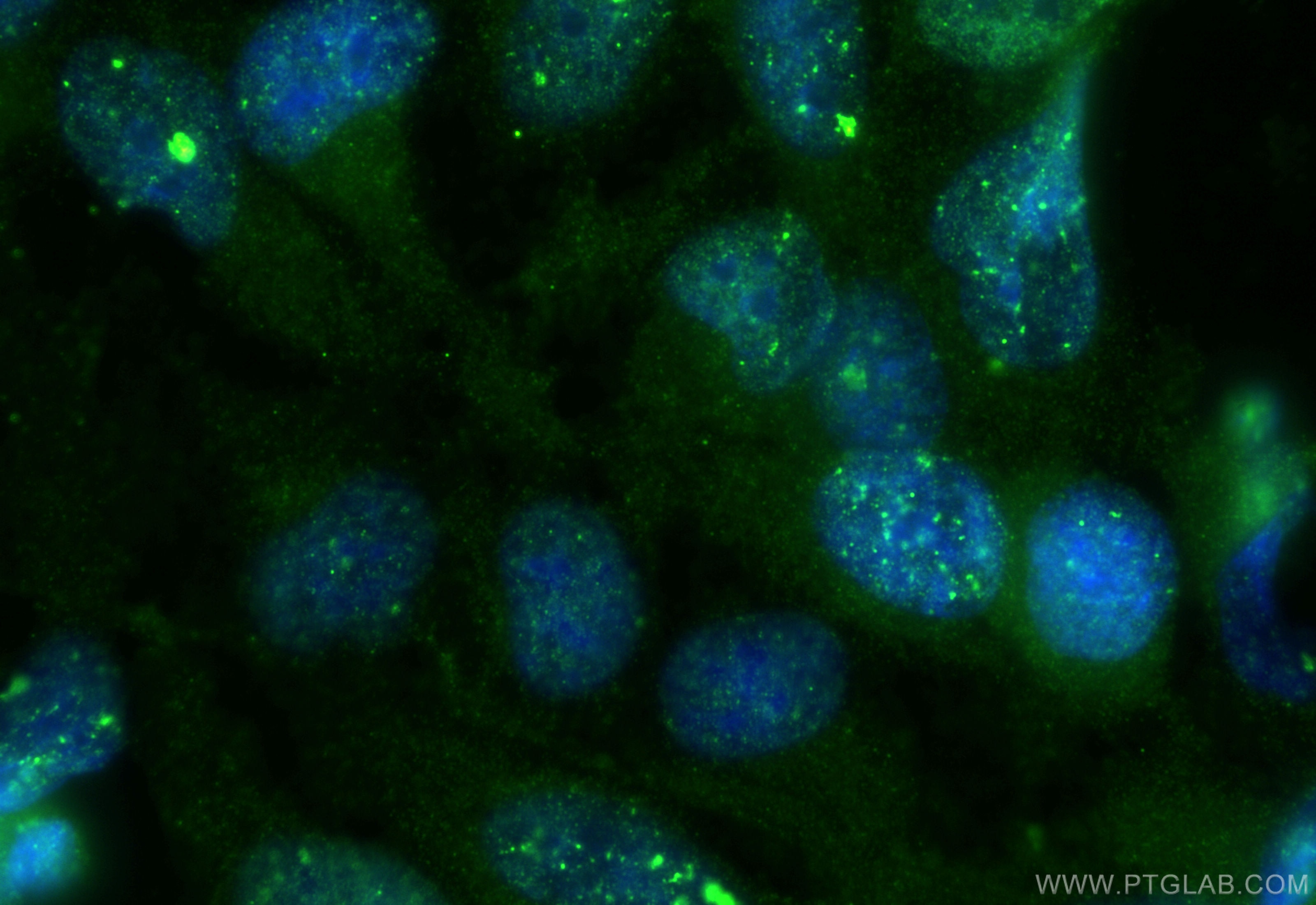Validation Data Gallery
Tested Applications
| Positive WB detected in | A431 cells, A-253 cells, BxPC-3 cells, HaCaT cells, LNCaP cells, U-251 cells, NIH/3T3 cells, rat brain tissue, mouse brain tissue |
| Positive IHC detected in | mouse cerebellum tissue Note: suggested antigen retrieval with TE buffer pH 9.0; (*) Alternatively, antigen retrieval may be performed with citrate buffer pH 6.0 |
| Positive IF/ICC detected in | HeLa cells |
Recommended dilution
| Application | Dilution |
|---|---|
| Western Blot (WB) | WB : 1:5000-1:50000 |
| Immunohistochemistry (IHC) | IHC : 1:300-1:1200 |
| Immunofluorescence (IF)/ICC | IF/ICC : 1:50-1:500 |
| It is recommended that this reagent should be titrated in each testing system to obtain optimal results. | |
| Sample-dependent, Check data in validation data gallery. | |
Product Information
32179-1-AP targets TOM1L2 in WB, IHC, IF/ICC, ELISA applications and shows reactivity with human, mouse, rat samples.
| Tested Reactivity | human, mouse, rat |
| Host / Isotype | Rabbit / IgG |
| Class | Polyclonal |
| Type | Antibody |
| Immunogen | TOM1L2 fusion protein Ag37612 相同性解析による交差性が予測される生物種 |
| Full Name | target of myb1-like 2 (chicken) |
| Calculated molecular weight | 56 kDa,507aa |
| Observed molecular weight | 60 kDa |
| GenBank accession number | NM_001082968.1 |
| Gene Symbol | TOM1L2 |
| Gene ID (NCBI) | 146691 |
| RRID | AB_3670215 |
| Conjugate | Unconjugated |
| Form | Liquid |
| Purification Method | Antigen affinity Purification |
| UNIPROT ID | Q6ZVM7 |
| Storage Buffer | PBS with 0.02% sodium azide and 50% glycerol{{ptg:BufferTemp}}7.3 |
| Storage Conditions | Store at -20°C. Stable for one year after shipment. Aliquoting is unnecessary for -20oC storage. |
Background Information
Target of Myb-like protein 2 (TOM1L2) acts as a MYO6/Myosin VI adapter protein that targets myosin VI to endocytic structures (PMID: 23023224). It may play a role in recruiting clathrin to endosomes and regulating growth factor-induced mitogenic signaling (PMID: 16412388; 16479011). TOM1L2 also regulates membrane trafficking that is linked to immunity and cell proliferation (PMID: 20604899).
Protocols
| Product Specific Protocols | |
|---|---|
| WB protocol for TOM1L2 antibody 32179-1-AP | Download protocol |
| IHC protocol for TOM1L2 antibody 32179-1-AP | Download protocol |
| IF protocol for TOM1L2 antibody 32179-1-AP | Download protocol |
| Standard Protocols | |
|---|---|
| Click here to view our Standard Protocols |
